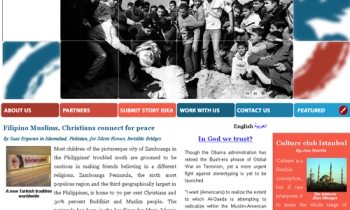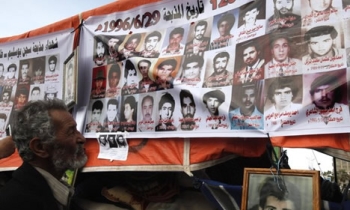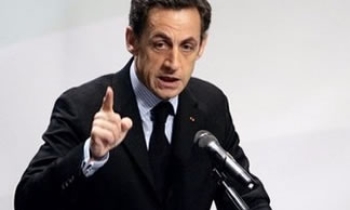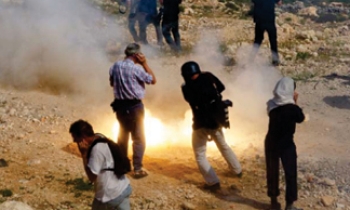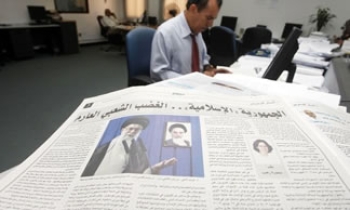Judith Miller of the New York Times first came to my attention through her book - God has ninety nine names. I did not like it. In it she displayed her pro-Israeli, pro-Phalangist (a fascist Lebanese organization) bias against the uprooted Palestinians. She disregarded facts, and preferred quoting endless talks to justify the marauding activities of the Israeli apartheid government and the U.S. support of it. Israel’s war against civilians was simply buried in reams of chatter. There again she exhibited her yellow journalism. (Late) Professor Edward Said of the Columbia University reviewed the book, and rightly called it symptomatic’ because books like these are "weapons in the contest to subordinate, beat down, compel and defeat any Arab and Muslim resistance to U.S.-Israeli dominance."
Miller talked about Jews and their suffering but failed to mention Jewish beliefs and laws against the goyim, the rabbinical sanctioned practices of killing, demolitions, deportations, land confiscations, annexation, etc. She epitomized a jaundiced view of Israel and the Occupied Territories of Palestine!
In her summary on the life of the Prophet of Islam, she did not quote one Muslim source - none of the classical biographies of the prophet. I wonder if Simon & Schuster, her publisher, would allow a book on Jesus or Moses that does not make a single mention of Christian or Judaic authority.
Miller’s work resembled the work of a name-dropping university student, who begins with an anecdote and then moves to a potted history. She cited unreliable sources that could not be verified. Her footnotes only proved her ignorance, lamentable prejudices and failures of comprehension.
Miller’s book was full of interviews with whole bunch of self-serving rascals that were not too convincing for any objective minded reader. Her use of phrase "my friend" (a few hundred times), rather than convincing her readers, puts them off the track through long digression that followed. And even when she managed to cite certain names, she misidentified their religion. These lapses in her account would not have been so bad if she was not bent on revealing her intimacy with those individuals.
After reading her book,’ I wondered why she truly wrote that book? After all, she admitted that she disliked all the Arab countries for one reason or another. She did not mention a single thing she loved about the people she wrote about. She seldom had a good word for the hospitality she was rendered by the few who invited her to their homes. Her book was a pathetic display of a deeply partisan journalist, a hostile individual, who did not and could not communicate with the people she wrote about the common mass, listen to their conversation, read their books, listen to their music. In summary, I found her to be a shallow and highly opinionated journalist whose voluminous work was unnecessarily too long and short on facts, analysis, structure and reflection.
So, am I surprised that Miller is now serving her time in jail? No, I am not. She is no martyr to the First Amendment, which grants American citizens and the press the right to freedom of speech. She had it coming for her years of eavesdropping journalism.
Two years ago, Jack Shafer, editor-at-large of the Slate website, wrote, "If reporters who live by their sources were obliged to die by their sources, New York Times reporter Judith Miller would be stinking up her family tomb right now." I could not have said better. Truly, in the 18-month run-up to the war on Iraq, if any single source of pro-war disinformation campaign could be awarded for misleading America into war, then it is Miller. The period was Miller Time’ of yellow journalism during which she claimed that her numerous’ Iraqi sources gave her detailed, sensational information about Saddam Hussein's weapons of mass destruction. Yet after the fall of Baghdad, now into its third year, none of those chemical, biological, and/or nuclear weapons was to be found, despite the exasperated crisscrossing of Iraq by Anglo-American weapons hunters. Even Miller herself accompanied the military team and searched for those mythical WMDs; it all turned out to be a pack of lies.
It was probably William Randolph Hearst the newspaper mogul who first popularized yellow journalism in the Americas to spark off war hysteria. In the 1890s he sent the artist Frederick Remington to Cuba to illustrate articles on an alleged revolt against the Spanish rule. Remington and his fellow journalists searched for signs of revolt but could not find any. He wrote to Hearst, "There is no war," and requested to be called back. Hearst sent him a cable that read, "Please remain. You furnish the pictures, I’ll furnish the war." The rest is history! Soon the Spanish-American war was to break out in which America discovered herself as an imperial power and conquered Cuba and Puerto Rico.
The role of a good reporter is like that of an intelligence analyst who digs for the truth, and not of a stenographer who simply reports what he/she hears without verification. Regrettably, Miller has been nothing but an eavesdropper, and if I may add, a terrible one in that. For the War Party she performed miracles by essentially becoming its spokeswoman. Earlier in the program, she described her role as the conveyor of official news rather than of a skeptical reporter: "My job was not to collect information and analyze it independently as an intelligence agency; my job was to tell readers of the New York Times as best as I could figure out, what people inside the governments who had very high security clearances, who were not supposed to talk to me, were saying to one another about what they thought Iraq had and did not have in the area of weapons of mass destruction."
One wonders, where did Miller learn the art of journalism? Unfortunately, it is not Miller alone who could take the full credit for Yellow Journalism. As Michael Massing in his 7,000-word analysis in the New York Review of Books "Now They Tell Us," (Feb. 26, 2004) noted, "In the period before the war, US journalists were far too reliant on sources sympathetic to the administration. Those with dissenting views–and there were more than a few–were shut out. Reflecting this, the coverage was highly deferential to the White House. This was especially apparent on the issue of Iraq's weapons of mass destruction–the heart of the President's case for war. Despite abundant evidence of the administration's brazen misuse of intelligence in this matter, the press repeatedly let officials get away with it."
Miller was essentially the megaphone for disseminating Bush administration’s intelligence’ and in promoting its agenda on Iraq. Indeed, she wrote the first article, entitled «Threats and Responses : The Iraqis ; U.S. Says Hussein Intensifies Quest for A-Bomb Parts», on Saddam Hussein's WMD programme, mentioning "aluminium tubes" that could be used for nuclear weapons. That was on September 7, just a few days after Vice-President Cheney delivered the first speech in which he presented Iraq as Washington's next target.
Miller’s links with the Pentagon are not new. In 1986, she wrote numerous articles on Libya, thus contributing to a massive disinformation campaign on Muammar Gaddafi which was coordinated by Admiral John Poindexter. During the first U.S.-led war in the Persian Gulf, Miller co-wrote a book with Laurie Mylroie, titled Saddam Hussein and the Crisis in the Gulf. Miller and Mylroie have both been clients of Eleana Benador, whose PR firm has represented many leading pro-war figures that have appeared prominently on television and in other public venues. She has also worked closely and uncritically with Ahmed Chalabi, the head of the Iraqi National Congress, in developing her reports on Iraq.
In August 2004, Miller was subpoenaed by a Washington grand jury investigating the leaking to Robert Novak and other journalists that Valerie Plame, the wife of former Ambassador Joseph Wilson, was an undercover CIA officer. In October 2004, U.S. District Judge Thomas Hogan found Miller in contempt for refusing to provide evidence to a grand jury on who leaked the name of Plame last year. Hogan sentenced Miller to 18 months imprisonment but she remained free until an appeal was heard. Her appeal to the Supreme Court was unsuccessful. In July 2005, after the Time magazine reporter Matthew Cooper agreed to testify about his sources, Miller was jailed for the duration of the grand jury investigation. The Washington Post is now reporting that the source’ Miller is trying to protect is I. Lewis "Scooter" Libby, the chief of staff to vice president Dick Cheney. [Libby, as one may recall, is at the center of neoconservative seat of power in Washington D.C.]
No matter, how little the punishment is Special Counsel Patrick Fitzgerald should be applauded for going after people like Judith Miller. I wish Fitzgerald would be able to convict the vicious white-collar cabal who practiced the politics of fear to fluff up war hysteria, and is now trying to cover up its crimes against humanity.
After almost a month in jail, Miller says she would like nothing better than to get outdoors. She is lucky that one day she would walk free. I only hope that in her prison cell, she would have the time to reflect upon the harm that her yellow journalism has brought about to the tens of thousands of Iraqi civilians who had lost their lives, their homes, and their family members. Will she have the moral courage one day to beg forgiveness for her crimes against these Iraqis? How about to the 1800 families (and still counting) of the dead U.S. soldiers?
About the author: Dr. Habib Siddiqui is an anti-war and human rights activist who has been writing on global issues and Muslim affairs for nearly two decades. He lives in Philadelphia and can be reached at saeva@aol.com.

